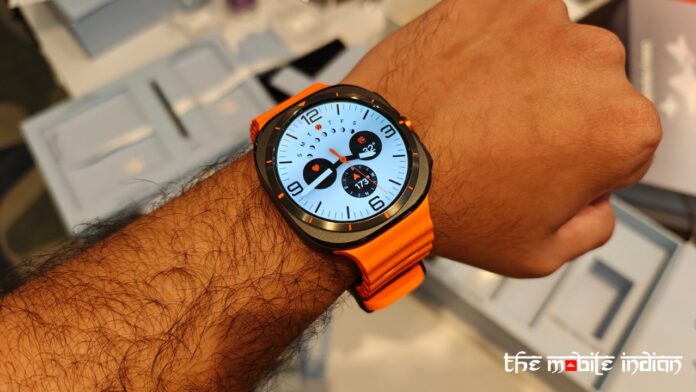The Galaxy Watch Ultra is Samsung’s latest entry into the rugged smartwatch market, priced at Rs 59,999. It is designed for adventurers and outdoor enthusiasts who need a durable wearable. Here’s a detailed review, looking at where the Galaxy Watch Ultra excels and where it falls short.
Design
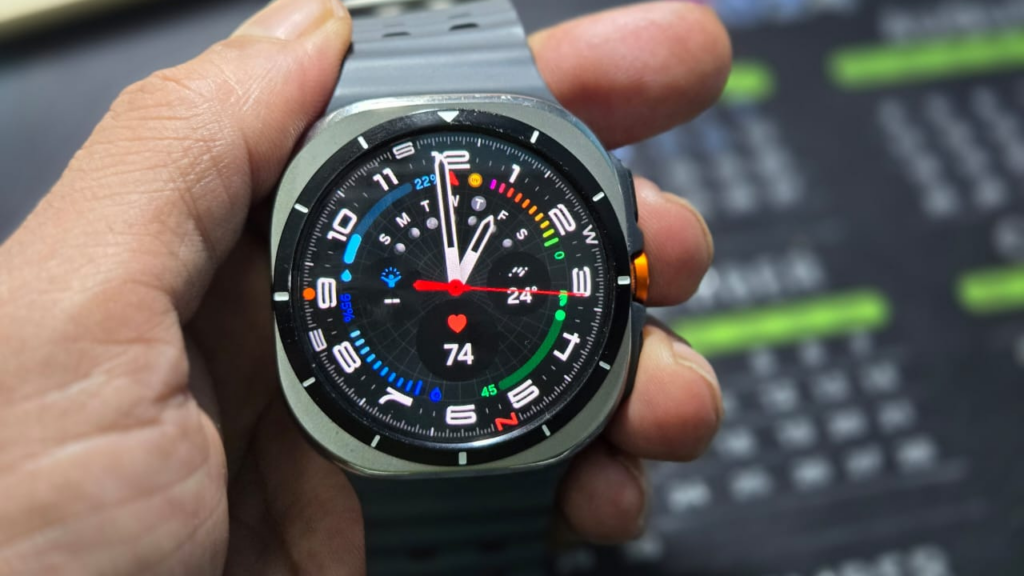
The design of the Galaxy Watch Ultra has undergone significant changes compared to its predecessor. It features a scratch-resistant titanium casing and sapphire glass display, giving it a tough, rugged feel. The circular watch face is now housed within a squircle-shaped frame. The watch also includes a new ‘Quick button,’ which can be customized alongside the standard Home and Back buttons.
The microphones are near the button, and the speaker is on the other side. Additionally, you can take calls directly from the watch when it is connected to the smartphone over Bluetooth.
At 47mm wide and 12.1mm thick, the Samsung Watch Ultra weighs 60.5 grams. It’s quite big! It’s designed for harsh environments, with a 10 ATM water resistance rating capable of handling depths of up to 100 meters. It also meets the MIL-STD-810H military standard, ensuring durability in extreme conditions. However, Samsung advises against using it for high-pressure water sports like diving.
The size and design may not appeal to everyone, especially users who prefer a more minimalist look. However, bulkiness is likely a positive factor for those who prioritize durability. The watch uses custom 22mm straps that integrate seamlessly into the chassis, which means standard straps won’t fit. The strap’s soft silicone material provides comfort, and its breathability makes it suitable for extended wear.
Read More:
Samsung Galaxy S24 Ultra is Available for Rs 1,09,999: Should You Consider it Over Pixel 9 Pro XL?
Samsung Galaxy S25 Renders Show Minor Design Refresh
Controls
The Galaxy Watch Ultra’s controls combine physical buttons and touchscreen navigation. The top button returns you to the main watch face, while the bottom button acts as a back function. The new Quick button can be customized for various tasks, adding more versatility.
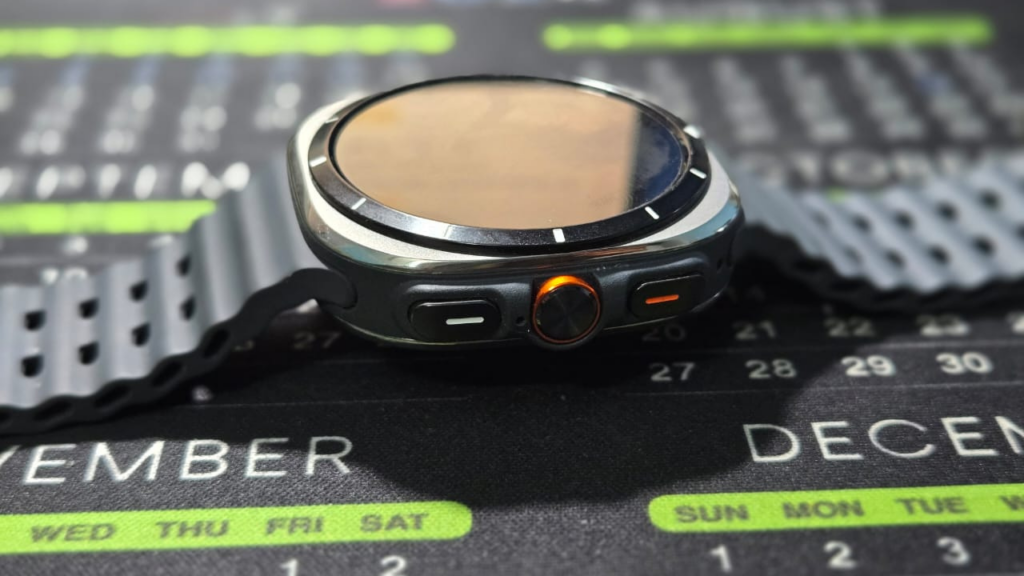
The touchscreen also plays a key role in navigation. Swiping down opens a customizable Quick Panel while swiping left and right provides access to tiles for fitness stats, calendars, and more.
The controls are generally intuitive, but some advanced features, especially the gestures, are only accessible if paired with a Samsung phone. For instance, double pinch gesture to get rid of notifications or click a photo using the appropriate App on the watch.
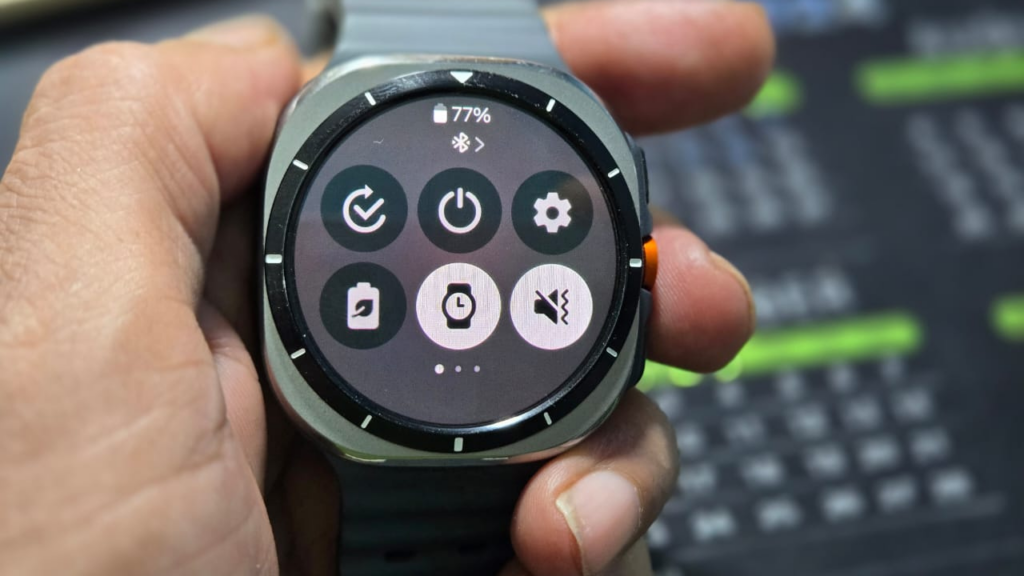
The absence of a physical rotating bezel is compensated for by a digital one in Galaxy Watch Ultra. You can drag your finger along the screen’s EDGE to navigate menus. Samsung has also enhanced the haptic feedback to mimic the feeling of rotating a physical bezel, improving the user experience despite the lack of a physical rotating bezel.
Display
The Galaxy Watch Ultra has a 1.5-inch AMOLED display, offering sharp visuals with its 480×480 resolution. The brightness peaks at 3,000 nits, making it easy to view in direct sunlight. The always-on display looks quite good, and some of the watch faces give the watch an Analog look.
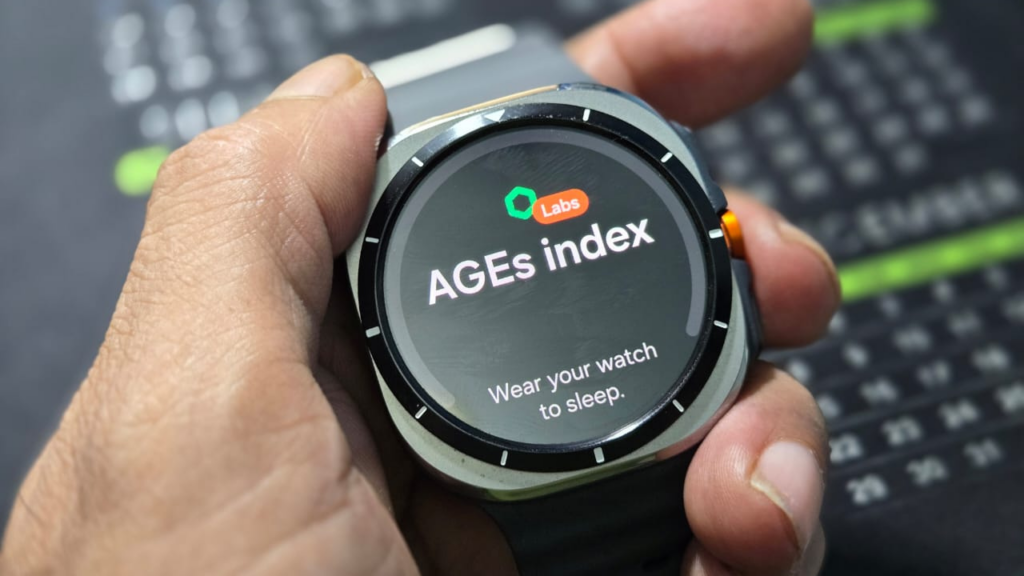
Hardware and Performance
Under the hood, the watch is powered by an Exynos W1000 chip, featuring a 5-core CPU that delivers faster performance than its predecessor. Samsung claims a 2.7x improvement in app launches and over 3x faster performance in both single-core and multi-core tasks. With 2GB of RAM and 32GB of storage, the watch has enough power to handle various apps and functions without lag.
Software
The Galaxy Watch Ultra runs on Wear OS 5 with Samsung’s One UI Watch 6 on top. The software is smooth and offers a high level of customization, allowing users to tweak settings like watch faces, tiles, and quick settings. However, a significant drawback is the need for multiple apps—Samsung Wearable, Samsung Health, and Samsung Health Monitor—to fully utilize the watch’s capabilities. This makes the user experience somewhat cumbersome, especially for non-Samsung smartphone users.
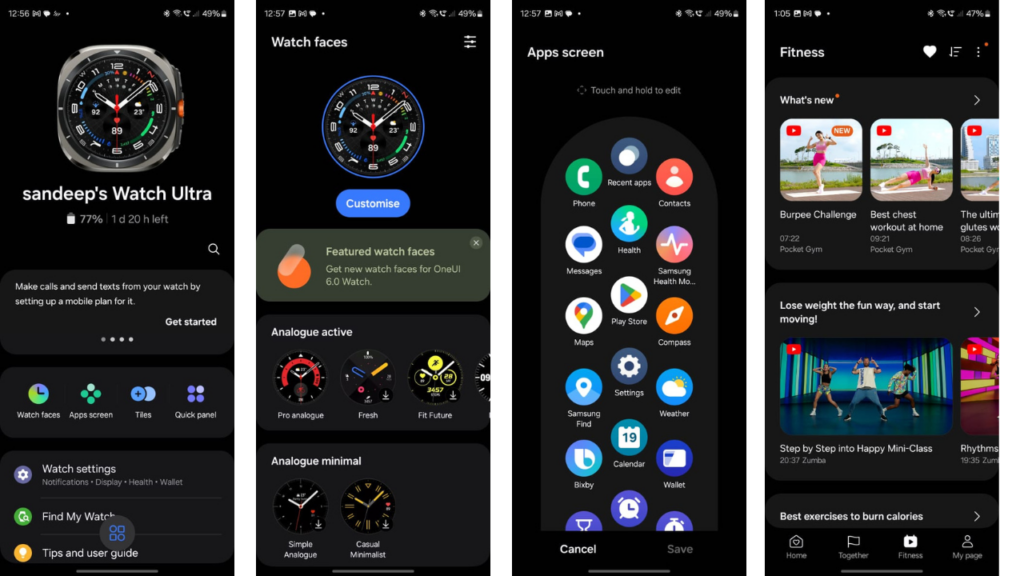
Health and Fitness Tracking
Samsung’s Galaxy Watch Ultra brings a host of features for fitness and health enthusiasts. At the core of this is the new BioActive sensor, which combines multiple functions, including heart rate monitoring, body composition analysis, and electrical heart activity measurements. This sensor supports Blood Pressure (BP), Electrocardiogram (ECG), and Bioelectrical Impedance Analysis (BIA), providing detailed insights into your body composition, including fat percentage, skeletal muscle mass, body water, and basal metabolic rate.
The watch introduces a new Multi-Sports mode that is accessible via Multi-Sports tiles. This allows users to create and track custom workout combinations, making it a great companion for duathlons, triathlons, and other multi-sport activities. Functional Threshold Power (FTP) is another standout feature for cyclists, providing critical insights into workout intensity. Samsung’s Galaxy AI also powers new insights, such as the Energy Score, which provides a daily wellness score based on sleep, heart rate, and workout data.
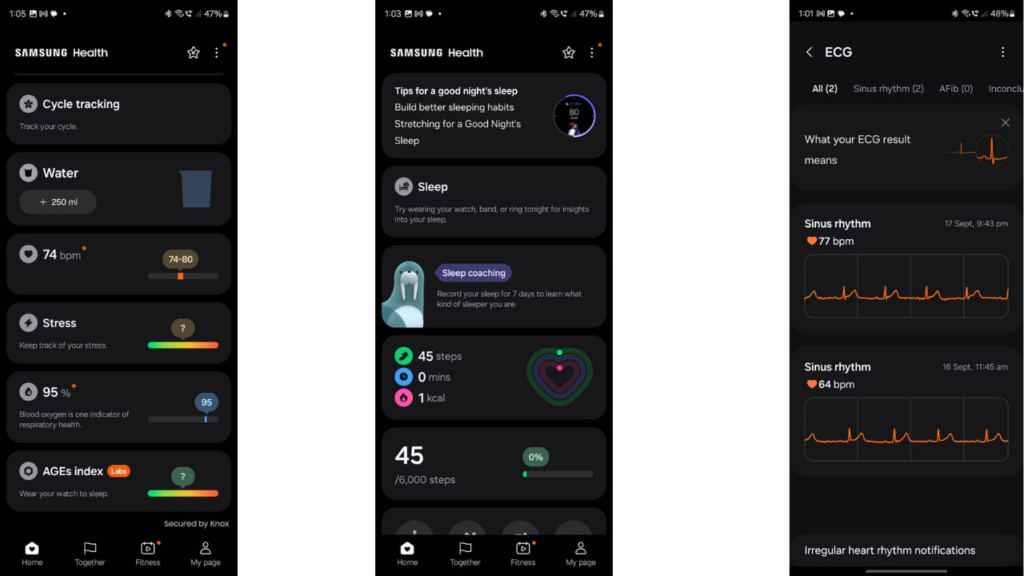
Menstrual Cycle and Heart Health Tracking
For women, the Samsung Health app offers menstrual cycle tracking. The Watch Ultra also provides irregular heart rhythm notifications (IHRN), which can alert users to atrial fibrillation (AFib) risks.
Step Tracking and GPS Accuracy
The Galaxy Watch Ultra’s step tracking is quite accurate, and GPS performance is also reliable. The watch quickly locks onto a signal and maintains accuracy during outdoor workouts.
Body Composition and AGEs Measurement
To measure body composition, users place their middle and ring fingers on the home and back buttons. The BioActive sensor sends electrical signals through the body and returns data on fat, muscle mass, and BMI. While this method is not 100% precise, it provides useful trends for tracking over time. The Galaxy Watch Ultra also introduces a new feature for monitoring Advanced Glycation End Products (AGEs), which are linked to biological ageing and metabolic health.
Sleep Tracking
Sleep tracking on the Galaxy Watch Ultra is comprehensive, offering detailed insights into sleep stages (REM, light, deep) along with charts that track your blood oxygen levels, skin temperature, and respiratory rate during sleep. The watch can detect snoring by placing your phone nearby, although this feature doesn’t always work flawlessly. The Sleep Apnea feature, which is available in some regions, is not yet supported in India.
Heart Rate, SpO2, and Stress Monitoring
The watch uses LED lights and photodiodes to monitor heart rate and SpO2 (blood oxygen) levels. Data from these measurements is logged continuously, providing real-time alerts if your heart rate goes too high or low. Samsung’s heart health features also include ECG and stress monitoring, and users can receive notifications about irregular heart rhythms (IHRN). While blood pressure tracking is available, accurate readings require calibration with a traditional cuff-based monitor.
Overall, the Galaxy Watch Ultra’s health and fitness tracking features are robust, though its best capabilities are optimized for Samsung phone users, limiting its broader appeal.
Safety Features
The Galaxy Watch Ultra also has a few safety features. It has an 86-decibel siren that can be activated for emergencies by pressing the quick button for 5 seconds. Additionally, it has fall detection capability and an emergency SOS function to alert specified contacts in case of need.
Battery Life
The watch is powered by a 590mAh battery, which provides around two days of battery life with features like always-on display and sleep tracking enabled. However, charging the watch is slow, taking up to two hours to reach a full charge using the provided wireless charger. It also lacks compatibility with other chargers, which could be inconvenient for some users.


